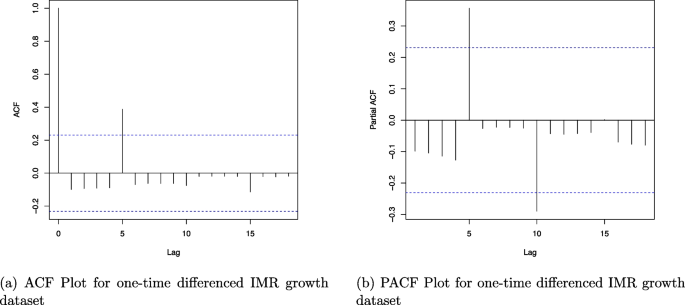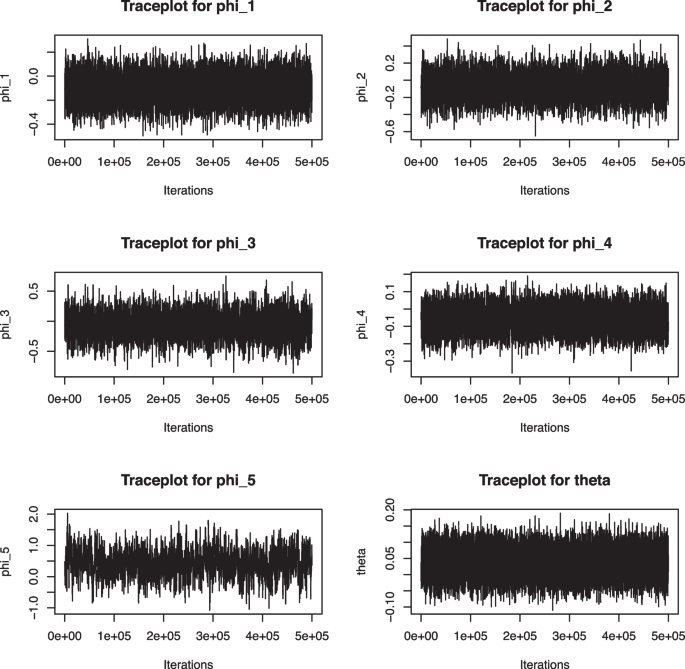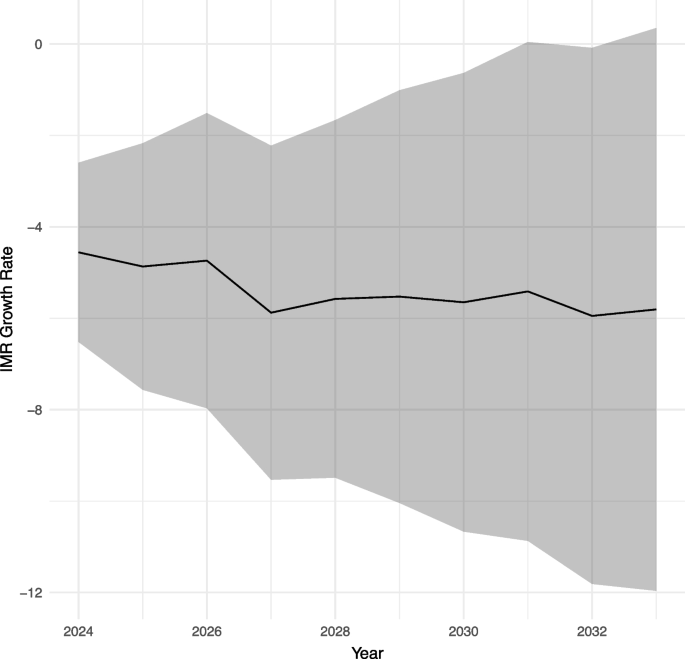Ingrid Galvis,1– 3 Timo Siepmann,3,4 Arturo Tamayo,3,5 Mary Pat Harnegie,6 Felipe Fregni1,7
1Principles and Practice of Clinical Research (PPCR) Program, ECPE, Harvard T.H. Chan School of Public Health, Boston, MA, USA; 2Department of Radiology, Columbia University Irving Medical Center, New York, NY, USA; 3Division of Health Care Sciences, Dresden International University, Dresden, Germany; 4Department of Neurology, Medical Faculty and University Hospital Carl Gustav Carus, Technische Universität Dresden, Dresden, Germany; 5Rady Faculty of Health Sciences University Manitoba, Division Neurology, Winnipeg, Canada; 6Cleveland Clinic Floyd D. Loop Alumni Library, Cleveland, OH, USA; 7Spaulding Neuromodulation Center, Spaulding Rehabilitation Hospital, Harvard Medical School, Boston, MA, USA
Correspondence: Ingrid Galvis, Principles and Practice of Clinical Research (PPCR) Program, ECPE, Harvard T.H. Chan School of Public Health, Boston, MA, USA, Email [email protected]
Background: Phantom limb pain (PLP) constitutes a diagnostic and therapeutic challenge with an unknown pathophysiology that likely comprises a combination of cerebral, spinal, and peripheral nervous system pathways. A novel therapeutic field in chronic pain targets cortical areas as treatment foci for neuropathic pain. One studied target in phantom limb pain is the primary motor cortex (M1). Given some promising results of noninvasive brain stimulation to reduce PLP, understanding further the role of M1 in the mechanisms of PLP would provide important future insights to further develop this therapeutic target.
Objective: To synthesize neuroimaging evidence on M1 reorganization in PLP and evaluate its association with pain intensity.
Methods: Six databases (Ovid MEDLINE, Cochrane Library, CINAHL, Scopus, Web of Science and EMBASE) were searched.
Results: Of the 2582 articles, 13 articles met our criteria and were included. Evidence demonstrated cortical reorganization in the contralateral M1, characterized by increased activation and maintained functional representation of the absent limb, lasting decades post-amputation. Patients with PLP showed significant activation in M1 and the somatosensory cortex during phantom limb movements, alongside reduced interhemispheric functional connectivity. However, results regarding the relationship between M1 reorganization and PLP intensity were inconsistent.
Conclusion: M1 cortical reorganization plays a substantial role in PLP mechanisms, making it a viable therapeutic target. The inconsistent correlation between M1 activity and PLP severity highlights the complexity of PLP pathophysiology. Future research should standardize imaging protocols, control for confounding variables, and investigate interactions between M1 and other brain regions to improve therapeutic approaches.
Keywords: phantom limb pain, motor cortex, motor cortex representation, brain activation
Introduction
Phantom limb pain (PLP) belongs to a group of neuropathic pain syndromes and is characterized by the perception of pain in a missing limb or following partial or complete deafferentation.1,2 The incidence of PLP ranges from 42.2 to 78.8%, with a reported prevalence of 45–85%. PLP onset can begin immediately or many years after amputation, occurring in 82.7% of cases within the first 12 months.2–5 In most cases, PLP subsides over time regardless of the cause of amputation, but it persists for several years in 5–10% of cases.6,7
Despite the high incidence in amputees and impact on their quality of life,8,9 PLP remains one of the most challenging chronic pain syndromes to treat, often responding poorly to conventional therapies.1,2,10–12 Although central and peripheral factors have been implicated in the development of PLP, the former is believed to be the major contributor. It has been proposed that the phenomenon is initiated by changes arising in the periphery that alter the afferent input into the brain and spinal cord.1,3,10,13 In that way, the region that represents the missing limb in the primary somatosensory cortex (S1) becomes deprived of its primary input, resulting in functional changes in the gray and white matter, prominently in the primary sensory (S1) and motor (M1) cortices.14–18
Neuroimaging techniques such as fMRI have thus been employed to investigate these neural alterations and guide rehabilitative strategies for PLP. fMRI has proven valuable for evaluating cortical reorganization, somatotopic representation changes, task-related activation, and treatment-related neural responses.19,20 For instance, when amputees with PLP attempt to move their phantom limbs, activation in the corresponding sensorimotor areas appears in fMRI, and this activation is similar to real executed movements in able-bodied subjects.19 Significant task-related activation in the superior temporal gyrus, medial temporal gyrus, and M1 contralateral to the executed movement has been documented in other studies.
Furthermore, greater dependence on the intact limb has been associated with decreased white matter degeneration, improved limb representation, and cortical expansion of S1 cortex into the deprived cortex.13 It has also been proposed that brain functional network recovery occurs through progressive restoration of functional connectivity between subcortical and cortical regions, particularly involving the supplementary motor area (SMA) and the contralateral S1M1.21,22
Despite previous reviews addressing the phantom limb pain mechanisms broadly or focusing on the therapeutic interventions, the precise role of primary motor cortex (M1) reorganization in PLP perception and intensity remains unclear.23 Neuroimaging studies have reported inconsistent findings—some showing positive associations between M1 activity and pain intensity, while others show null or contradictory results. Moreover, understanding M1 involvement is clinically relevant, as this area is targeted by rehabilitation strategies such as motor imagery, mirror therapy, and non-invasive brain stimulation, which aim to reverse maladaptive cortical changes and alleviate pain. This systematic review synthesizes the available neuroimaging evidence on M1 reorganization in PLP, with an emphasis on its relationship to pain intensity and its implications for therapy.
Materials and Methods
This review was conducted with the PRISMA 2020 statement (Page MJ, McKenzie JE, Bossuyt PM, et al, 2020), and an a priori protocol was registered with PROSPERO (CRD42022383423).
Search Strategy
We applied a search strategy developed in collaboration with an experienced librarian (MH) in Ovid MEDLINE, Cochrane Library, CINAHL, Scopus, Web of Science and EMBASE. The search was performed from each dataset’s inception until March 2023 by using controlled vocabulary, supplemented with keywords related to phantom limp pain and neuroimaging techniques. There was no language restriction placed on the search. No additional filters (eg, publication year) were set. A manual search was also conducted to find other potential articles based on references identified in the individual articles. Our full search strategy is available in the Supplemental Digital content-Search strategies.
Eligibility Criteria
We included original articles and case reports that had interventions with positive or negative outcomes in the primary motor cortex by using neuroimaging techniques in adults with a limb amputation and suffering from PLP. Outcomes expected: (1) structural changes in M1. (2) increased, decreased, or absence of neuronal activation in the M1 after imagined phantom limb movements or TDCs. There was no language restriction placed on the search.
Exclusion Criteria
The following criteria were used to exclude studies: (1) wrong patient population: studies that included adults with any limb amputation, but without PLP. (2) wrong intervention: studies that did not use neuroimaging techniques in patients with PLP (3) wrong outcomes: studies that included amputees with PLP who underwent any of the neuroimaging modalities but did not report either positive or negative outcomes in the primary motor cortex. (4) wrong study design: (a) animal studies; (b) review articles; (c) letters to the editor; (d) editorials. Duplicated studies were also removed.
Data Collection and Management
Two independent reviewers (IG, EL) screened the abstracts and assessed them for inclusion and exclusion criteria. Duplicated records were removed. Then, full texts were read and assessed for eligibility. Any discrepancies were discussed between the two reviewers initially and if no agreement was reached, this was solved by another reviewer (HA). Extraction of relevant results was checked (10% of the time) by a second reviewer (HA). Due to the heterogeneity in study designs and outcome reporting, a meta-analysis was not feasible. Instead, a narrative synthesis was conducted. Findings were grouped and interpreted based on task type (eg, motor execution vs imagery) and reported associations between M1 activity and phantom limb pain intensity.
Protocol Deviations
Following PROSPERO registration (CRD42022383423), a number of adjustments were made to improve the comprehensiveness of the review. These included (1) expanding the databases searched to include CINAHL and Scopus, (2) removal of the language restriction to capture a broader range of studies, and (3) inclusion of both case-control and cross-sectional studies. These changes were implemented to capture a more representative and updated evidence base and are transparently reported here.
Risk of Bias Assessment
One reviewer (HA) independently assessed the risk of bias of the studies according to the Newcastle -Ottawa quality assessment scale,24 and the results were displayed using the “robvis” package.25 Three domains were evaluated: subject selection, comparability, and the assessment of the exposure. The evaluation was reported as “low”, “some concerns” or “high”, as summarized in Figure 1.
|
Figure 1 Literature search flow-chart.
|
Results
Studies Retrieval
The results of the search strategy are summarized in Figure 2 as PRISMA statement flow diagram. The literature search resulted in 1494 articles after duplicates were removed. Based on titles and abstracts screening, 1196 articles were excluded. The remaining 298 articles underwent full-text screening to identify studies reporting M1 findings in PLP patients using neuroimaging techniques. Although our initial search included a broad range of neuroimaging modalities, only studies employing functional MRI (fMRI) met our criteria for inclusion. In this phase, 281 articles were excluded as they did not report M1 findings, did not include PLP patients, or had an inappropriate study design (eg, review articles). Therefore, 13 articles were included: 1 case report, 10 case-controls studies, and 2 cross-sectional studies.
 |
Figure 2 Risk of bias assessment.
|
Overall Characteristics
Among the patient’s characteristics, the predominant cause of amputation was trauma. Most of the studies involved upper-limb amputees, and only four studies included lower-limb amputees. The right upper limb was the most affected, and only 5 studies mentioned the use of prostheses. The time since amputation ranged from 1.5 years to 21.3 years (mean 14.27 years). fMRI was the most common neuroimaging used to evaluate cortical reorganization after performing tasks, imaginary/mental training, or undergoing neurostimulation. Most of the studies included healthy patients without amputation as controls. Only one study used subjects as their own control, comparing against the participants’ ipsilateral hemisphere to the amputation.
One study evaluated transcranial direct current stimulation over the primary sensorimotor missing cortex (S1/M1) to alleviate PLP. Eleven studies assessed cortical reorganization in M1/S1 in imagined phantom limb movements, mental imagery, and mirror therapy. The characteristics of the included articles are summarized in Table 1. Study heterogeneity prevented data pooling.
 |
Table 1 Characteristic of Included Studies
|
Clinical Findings-Role of the Primary Motor Cortex in Imaginary Movements
Reorganization in M1/S1 contralateral to the amputation side has been suggested to be the main neural correlate of PLP. Supporting this idea, Lotze et al27 studied upper limb amputees and found that only patients with PLP presented a shift of the lip representation into the deafferented primary motor and somatosensory hand areas during lip movements and imagined movements of the phantom hand. Moreover, the displacement of the lip representation in the primary motor and somatosensory cortex was positively correlated to the intensity of PLP (Table 2).
 |
Table 2 Summary of Functional MRI Findings Reported in Studies of Phantom Limb Pain
|
Contrary to the shift in motor cortex representation mentioned previously, Raffin et al31 and Kikkert et al35 found that maintained representation of the missing limb in the primary somatosensory cortex seems to be associated with chronic PLP. They consider that PLP is associated with the preservation of the grey matter volume in the cortical area of the missing limb. Additionally, Makin et al32 found that individuals suffering more from PLP have a greater reduction in interhemispheric functional connectivity, which could explain the decrease in callosal white-matter fractional anisotropy in lower limb amputees documented by Simões et al.38 Therefore, multiple factors interact to preserve the local structural and functional representations, but, at the same time, disrupt the interhemispheric connectivity.
In addition, most of the studies found that during the imagination of moving the phantom hand, a significant activation in the contralateral primary motor (M1) and somatosensory cortices was present compared with imagination hand movements in the control groups. However, only the patients with PLP during the imagined movement of the phantom activated the neighboring face cortical area and had increased activation in the M1/S1 lip area contralateral to the amputation side. Thus, the increased neuronal activation in the contralateral M1 during imaginary limb movements proves that the cortical areas of the missing limb are still functional even decades after amputation.13,39
Likewise, the imaginary movement of the phantom limb activates cortical areas that differ from the intact limb movement. Roux et al29 found that the activation during imaginary movement in control subjects did not activate the precentral or postcentral gyri. In its place, activation was mainly in the SMA region. Supporting this idea, Romero et al40 studied lower limb amputees and found that the brain activation during the imagery movement tasks of the amputated lower limbs involves the superior temporal gyrus, contralateral M1, and contralateral SMA.
Interestingly, activation of the basal ganglia loop was not seen during the imagery movement task of the intact toes in amputees or the healthy control group. Only during imaginary limb movements, increased activation was found in the contralateral basal ganglia at the medial globus pallidus, substantia nigra, and thalamus.40 The increased activation in the basal ganglia–thalamus–cortex pathway during imaginary movement of the phantom toes may reflect an abnormal open loop functioning of the thalamocortical system underlying the conscious awareness of the phantom phenomenon.40
Regarding the intensity of pain in amputee patients, the contradictory results in the studies cannot provide certain evidence about the role of M1 in modulating pain. Makin et al,32 Kikkert et al,35 and Andoh et al41 found an association between the degree of activation in the contralateral M1 during phantom movement and the intensity of pain in amputees, with greater activation in individuals with a worse history of PLP. In contrast to that, Duarte et al36 found that PLP intensity is not associated with signal changes in M1 and a shift in motor cortex representation. Instead, signal changes in M1 are inversely correlated with time since amputation. Thus, longer periods of amputation lead to compensatory changes in sensory-motor areas with fewer changes in the contralateral M1. Duarte et al36 conclude that signal changes in the visual cortex seem to be more related to greater pain.
Clinical Correlation—M1 Activation and Pain Relief
Elimination of cortical reorganization—evidenced by reduced activation in the contralateral M1 and S1 of the missing limb—has been associated with decreased intensity and unpleasantness of chronic pain in amputees. Supporting this, Maclver et al30 studied 13 upper-limb amputees and found that after 6-week training in mental imagery, patients presented a significant reduction in both the intensity and unpleasantness of persistent pain and its exacerbations, accompanied by a reversal of cortical reorganization.30 Before training, cortical activation during lip pursuing extended abnormally from the lip area into the deafferented hand region of M1 and S1 a pattern that correlated with pain severity.
Foell et al33 investigating the effects of mental imagery on PLP found similar changes.33 The study showed that the pain relief induced by mirror therapy is associated by a reversion of dysfunctional cortical reorganization, but mainly in S1. As PLP decreased, the representation of the missing limb in the somatosensory cortices become similar, possibly returning to their normal state. However, for the motor cortex, no connection was found. Instead, pain reduction after mirror training was related to a decrease in activity in the inferior parietal cortex (IPC), an area connected to the interpretation of sensory information, and pain generation. That might suggest that the ability to relate the mirror image to one’s phantom influence the treatment effectiveness to alleviate pain.42 They also found no significant correlation between time since amputation and the treatment effects of mirror therapy.
Some evidence suggests that other pain-related areas are involved in the physiopathology of PLP. Kikkert et al35 found that using task-concurrent NIBS stimulation in the mid and posterior insula and S2 reduced activity in the S1/M1 of the missing hand cortex. The reduced activity in M1/S1 was correlated with PLP relief. However, this study provides additional evidence that highlights the causal role of the mid and posterior insula in alleviating PLP, possibly through S1/M1 modulation.
Raffin et al31 found that the amount of ipsilateral activity in the former hand area (M1) while moving the intact hand is correlated with the ability to move the phantom. Therefore, these findings correlated with the studies that found the reactivation of the deprived cortex (M1) when moving the intact and phantom limbs during mirror or imagery therapy.26,28 Hence, this evidence reinforces the utility of these therapies to protect against reorganization of the motor cortex contralateral to the amputation and reduce phantom pain.
Clinical Correlation-Control Group Findings
Although the exact mechanisms behind the mode of action of mirror therapy (MT) are not clear, it has been proposed that there is representational restoration in the brain of the missing limb by the conjunction of visual and proprioceptive input. Foell et al33 used the hemispheres ipsilateral to the amputation as controls for the measured changes in cortical activity after 4 weeks of MT. The study found no significant association between the cortical shift in the ipsilateral S1 and M1 with treatment benefit. Therefore, any changes in the ipsilateral hemisphere after MT did not influence PLP relief. In contrast to a reduction of dysfunctional reorganization in the contralateral S1 that was correlated with pain relief.
Discussion
Our review highlights cortical organization at a network-level scale, with reduced interhemispheric functional connectivity of the contralateral M1 and S1.43–45 The findings in the studies suggest that cortical reorganization leads to PLP, and it is accompanied by the persistence of the missing limb’s representation. Amputees who suffer from PLP seem to have greater cortical reorganization compared to amputees without pain.46,47 The amount of cortical reorganization in some studies has been strongly related to the intensity of PLP4.45 Zhang et al20 and Lotze et al27 found that the cortical shift is positively correlated with the PLP intensity.20 In other words, PLP has a negative correlation with cortical reorganization and the reduction in pain intensity.48 In contrast, Gunduz et al46 and Pacheco et al49 did not find any correlation between motor cortex reorganization and level of pain. Pacheco et al49 conclude that the amount of cortical reorganization could be associated with the presence of pain instead of its severity.49
Hence, neuroplasticity-based methods that strengthen the cortical representation of the phantom and decrease the cortical reorganization have been used for the relief of PLP.50–56 Among these PLP therapies, motor imagination, mirror therapy, and repetitive magnetic stimulation (rTMS) have shown inconsistent results. Repetitive magnetic stimulation (rTMS) over M1 has been revealed to temporarily alleviate the painful cramping sensation in the phantom limb and even provoke a sensation of movement.4,21,38,57–59
M1 plays a role in alleviating pain relief in PLP patients by mechanisms that are contradictory and not well understood. As described by Duarte et al,36 the posterior M1 is linked to nonmotor regions including sensory and attentional brain areas that can suggest its modulation in pain.36 Therefore, this could explain the reversibility of neuroplastic changes in patients after transcranial direct current stimulation over the M1. In addition, since M1 is involved in the planning of action and execution of a motor task, the virtual reality mirror box (VRMB) has also been used to bring back the representation of the missing hand and reverse the maladaptive brain plasticity. In amputees, VRMB has shown significant task-related activation in the primary motor (MI) and somatosensory cortex (SI) contralateral to the executed movement.21,56 Likewise, there is increased functional connectivity between the M1 (contralateral to the executed movement) and the medial occipital cortex, bilateral precuneus, caudate, superior frontal and superior medial frontal cortices, and angular gyrus.21,60 Although similar brain areas are activated in motor imagery and execution, the degree of activation is different. For example, excitatory coupling between the thalamus and primary motor cortex is present during motor execution, but not in motor imagery.22,61
Taken together, the findings confirm that different components of pain (cognitive, affective, and discriminative) can be assigned to different brain regions and these areas play a role in the distinctive pain experienced by each individual (see Figure 3).55 Pacheco et al49 suggested that PLP intensity may be more related to neuronal circuits associated with emotional processing.49 Therefore, the maladaptive cortical reorganization seems to activate pain circuits and the circuits related to emotional affective processing regulate the pain intensity. As described, the somatosensory cortex seems to be associated with the sensory-discriminative component, but the thalamus and limbic structures may determine their significance for the generation of affective and cognitive aspects of pain. Likewise, the insula may have a causal role (and other pain-related areas) in alleviating PLP, potentially through S1/M1 modulation.
 |
Figure 3 Factors determining the outcome of PLP.43 Abbreviations: M1, Primary motor cortex; S1, Primary somatosensory cortex; PFC, Prefrontal cortex; IPC, inferior parietal cortex.
|
There is also an important role of self-perception and corporeal awareness of body integrity that is optimized with a mirrored image of intact limbs.28,62 That concept is supported by the ability of the visual cortex to generate kinesthetic motor imagery of own body movement.61,63 Therefore, mirror therapy demonstrates the capacity to incorporate visual inputs in tasks by using similar approaches as motor execution (M1 activation). Moreover, the decrease of activity in the inferior parietal cortex (IPC) after mirror therapy also suggests its influence on the interpretation of sensory information and alleviation of pain.33
Similarly, the presence of itching in PLP patients as a compensatory mechanism to decrease neuropathic pain was suggested by Duarte et al.36 They evidenced an association between the decreased activity in M1 and itching sensation compared with subjects without itching. Pain and itching have been found to partially activate the same cortical areas in healthy individuals (the anterior cingulate cortex, the anterior insula, the basal ganglia and the pre-supplementary motor area) which suggest that the two sensations may be interlinked on a neurophysiological level.64 However, only pain has been found to induce an activation of the thalamus, and being significantly correlated to pain sensation. These findings support the idea that the thalamus and S2 are important components for pain perception and demonstrate the central mechanisms of itching distinct from pain.64
Due to the rapid appearance of symptoms in some cases after amputation, cortical reorganization has been proposed to be a result of unmasking occult synapses in the somatosensory cortex, rather than specific anatomical changes.39 A theory states that PLP may also arise from errors occurring in that cortical remapping process and leading to over-amplification of the pain experienced. This is the result of a lack of inhibitory activity in the sensory-cortical feedback pathways with a continued efferent motor cortical command. These are hypotheses and the current therapies have provided some clues about the physiopathology of PLP.
Given the controversial findings, larger studies evaluating the neurophysiological and structural changes in patients with PLP are needed, specifically focusing on the different brain areas that interlay and interact with the primary motor cortex to modulate pain. Likewise, a challenge to PLP research begins with how PLP is quantified. Most of the PLP treatment outcomes are measured by self-report, and as mentioned previously, PLP is heterogeneous like the experience (quality, intensity, frequency, time of onset, etc) and its association with other phantom sensations. Münger et al65 found that 90% of patients with PLP experience at least 1 phantom sensation such as electric sensations, itching, and movement.65
Therefore, if the symptoms are assessed by trained research staff instead of questionnaire-based, the risk of response bias is reduced. Consequently, an analysis of the fMRI series can provide detailed and accurate results about the precise cortical areas activated in pain. Lastly, one limitation of retrospective pain assessments before the amputation is the recall bias. Patients with chronic pain may have difficulties rating their pre-amputation pain correctly when the amputation occurred months or years previously.
Finally, more longitudinal studies with larger sample sizes, and more homogeneous populations, considering the different factors associated with PLP are needed. The studies should include patients with low-intensity PLP or without pain as controls to assess the amount of reorganization more precisely with the presence of PLP and identify potential patients with an increased risk of developing phantom pain.
Limitations
This review has several limitations. First, the number of included studies was relatively small, which limits the breadth and statistical robustness of the findings. Second, there was substantial heterogeneity in study designs, participant characteristics, neuroimaging protocols, and the tasks employed (eg, motor execution vs imagery), making direct comparisons difficult. Third, the majority of research relied on self-reported, subjective measures of phantom limb pain, which are subject to recall and reporting bias. Fourth, due to the variability in outcomes and reporting, no quantitative synthesis or meta-analysis was conducted, and between-study heterogeneity was not formally assessed.
As a result, the synthesis was descriptive and qualitative, which limits the generalizability of conclusions. Fifth, the possibility of publication bias cannot be ruled out, particularly given the limited number of studies and the tendency to publish significant findings. Finally, most included studies involved upper-limb amputees, which may limit the generalizability of the findings to lower-limb amputees or other amputation contexts. Despite these limitations, this review offers valuable insights into the role of M1 in PLP and highlights directions for future research.
Conclusion
This systematic review highlights the involvement of the M1 in the pathophysiology of PLP, with fMRI studies demonstrating cortical reorganization that may correlate with pain persistence or response to therapy. These findings suggest that M1 could serve as a potential target for neuromodulatory interventions. However, M1 does not operate in isolation. Several studies also reported changes in regions such as SI, SMA, and temporal gyri, indicating that PLP is mediated by a distributed cortical and subcortical network. These broader findings warrant further integration into neurorehabilitation strategies.
Despite the progress in functional imaging, inconsistencies in study design, outcome measures, and imaging paradigms limit the comparability of existing findings. Future research should prioritize standardized imaging protocols, stratification by limb type (upper vs lower extremity), and control for key confounders such as prosthesis use, time since amputation, handedness, and pre-amputation pain history. Longitudinal studies with larger and more diverse populations will be essential to clarify causal mechanisms and support personalized therapeutic approaches. In addition, the inclusion of control groups in future studies would allow for direct comparison, thereby enhancing the interpretability and robustness of the results.
Neuroimaging continues to offer a valuable insight into the central mechanisms underlying PLP and has the potential to guide more targeted and effective treatments as evidence accumulates.
Acknowledgments
We thank Dr. Hedaia Alquatani (HA) and Dr. Eddy Lincango (EL) for helping in the screening of articles and risk of bias assessment. ChatGPT-4 (OpenAI) was used to edit and refine the manuscript text. The authors reviewed and approved all content.
Funding
This research received no external funding.
Disclosure
The authors report no conflicts of interest in this work.
References
1. Flor H. Phantom-limb pain: characteristics, causes, and treatment. Lancet Neurol. 2002;1(3):182–189. doi:10.1016/S1474-4422(02)00074-1
2. Wolff A, Vanduynhoven E, van Kleef M, Huygen F, Pope JE, Mekhail N. 21. Phantom pain. Pain Pract. 2011;11(4):403–413. doi:10.1111/j.1533-2500.2011.00454.x
3. Stankevicius A, Wallwork SB, Summers SJ, Hordacre B, Stanton TR. Prevalence and incidence of phantom limb pain, phantom limb sensations and telescoping in amputees: a systematic rapid review. Eur J Pain. 2021;25(1):23–38. doi:10.1002/ejp.1657
4. Jackson MA, Simpson KH. Pain after amputation. Cont Educ Anaesth Crit Care Pain. 2004;4(1):20–23.
5. Richardson C, Glenn S, Nurmikko T, Horgan M. Incidence of phantom phenomena including phantom limb pain 6 months after major lower limb amputation in patients with peripheral vascular disease. Clin J Pain. 2006;22(4):353–358. doi:10.1097/01.ajp.0000177793.01415.bd
6. Kuffler DP. Coping with Phantom Limb Pain. Mol Neurobiol. 2018;55(1):70–84. doi:10.1007/s12035-017-0718-9
7. Bosmans JC, Geertzen JH, Post WJ, van der Schans CP, Dijkstra PU. Factors associated with phantom limb pain: a 31/2-year prospective study. Clin Rehabil. 2010;24(5):444–453. doi:10.1177/0269215509360645
8. Padovani MT, Martins MR, Venâncio A, Forni JE. Anxiety, depression and quality of life in individuals with phantom limb pain. Acta Ortop Bras. 2015;23(2):107–110. doi:10.1590/1413-78522015230200990
9. Hirsh AT, Dillworth TM, Ehde DM, Jensen MP. Sex differences in pain and psychological functioning in persons with limb loss. J Pain. 2010;11(1):79–86. doi:10.1016/j.jpain.2009.06.004
10. Cohen SP, Mao J. Neuropathic pain: mechanisms and their clinical implications. BMJ. 2014;348:f7656. doi:10.1136/bmj.f7656
11. Humble SR, Dalton AJ, Li L. A systematic review of therapeutic interventions to reduce acute and chronic post-surgical pain after amputation, thoracotomy or mastectomy. Eur J Pain. 2015;19(4):451–465. doi:10.1002/ejp.567
12. Richardson C, Kulkarni J. A review of the management of phantom limb pain: challenges and solutions. J Pain Res. 2017;10:1861–1870. doi:10.2147/JPR.S124664
13. Zheng BX, Yin Y, Xiao H, et al. Altered cortical reorganization and brain functional connectivity in phantom limb pain: a functional MRI study. Pain Pract. 2021;21(4):394–403. doi:10.1111/papr.12966
14. Flor H, Nikolajsen L, Staehelin Jensen T. Phantom limb pain: a case of maladaptive CNS plasticity? Nat Rev Neurosci. 2006;7(11):873–881. doi:10.1038/nrn1991
15. Röricht S, Meyer BU, Niehaus L, Brandt SA. Long-term reorganization of motor cortex outputs after arm amputation. Neurology. 1999;53(1):106–111. doi:10.1212/WNL.53.1.106
16. Kew JJ, Ridding MC, Rothwell JC, et al. Reorganization of cortical blood flow and transcranial magnetic stimulation maps in human subjects after upper limb amputation. J Neurophysiol. 1994;72(5):2517–2524. doi:10.1152/jn.1994.72.5.2517
17. Fuhr P, Cohen LG, Dang N, et al. Physiological analysis of motor reorganization following lower limb amputation. Electroencephalogr Clin Neurophysiol. 1992;85(1):53–60. doi:10.1016/0168-5597(92)90102-H
18. Irlbacher K, Meyer BU, Voss M, Brandt SA, Röricht S. Spatial reorganization of cortical motor output maps of stump muscles in human upper-limb amputees. Neurosci Lett. 2002;321(3):129–132. doi:10.1016/S0304-3940(02)00039-3
19. Bao B, Duan L, Wei H, et al. Changes in temporal and spatial patterns of intrinsic brain activity and functional connectivity in upper-limb amputees: an fMRI study. Neural Plast. 2021;2021:8831379. doi:10.1155/2021/8831379
20. Zhang J, Zhang Y, Wang L, et al. Brain functional connectivity plasticity within and beyond the sensorimotor network in lower-limb amputees. Front Hum Neurosci. 2018;12:403. doi:10.3389/fnhum.2018.00403
21. Diers M, Kamping S, Kirsch P, et al. Illusion-related brain activations: a new virtual reality mirror box system for use during functional magnetic resonance imaging. Brain Res. 2015;1594:173–182. doi:10.1016/j.brainres.2014.11.001
22. Kasess CH, Windischberger C, Cunnington R, Lanzenberger R, Pezawas L, Moser E. The suppressive influence of SMA on M1 in motor imagery revealed by fMRI and dynamic causal modeling. Neuroimage. 2008;40(2):828–837. doi:10.1016/j.neuroimage.2007.11.040
23. Reilly KT, Sirigu A. The motor cortex and its role in phantom limb phenomena. Neuroscientist. 2008;14(2):195–202. doi:10.1177/1073858407309466
24. Wells GA, Shea B, O’Connell D, et al. The Newcastle-Ottawa Scale (NOS) for assessing the quality of nonrandomized studies in meta-analyses. Available from: http://www.ohri.ca/programs/clinical_epidemiology/oxford.asp.
25. McGuinness LA, Higgins JPT. Risk-of-bias VISualization (robvis): an R package and Shiny web app for visualizing risk-of-bias assessments. Res Synth Methods. 2021;12(1):55–61. doi:10.1002/jrsm.1411
26. Ersland L, Rosén G, Lundervold A, et al. Phantom limb imaginary fingertapping causes primary motor cortex activation: an fMRI study. Neuroreport. 1996;8(1):207–210. doi:10.1097/00001756-199612200-00042
27. Lotze M, Flor H, Grodd W, Larbig W, Birbaumer N. Phantom movements and pain. An fMRI study in upper limb amputees. Brain. 2001;124(Pt 11):2268–2277. doi:10.1093/brain/124.11.2268
28. Dettmers C, Adler T, Rzanny R, et al. Increased excitability in the primary motor cortex and supplementary motor area in patients with phantom limb pain after upper limb amputation. Neurosci Lett. 2001;307(2):109–112. doi:10.1016/S0304-3940(01)01953-X
29. Roux FE, Lotterie JA, Cassol E, Lazorthes Y, Sol JC, Berry I. Cortical areas involved in virtual movement of phantom limbs: comparison with normal subjects. Neurosurgery. 2003;53(6):1342–1353. doi:10.1227/01.NEU.0000093424.71086.8F
30. MacIver K, Lloyd DM, Kelly S, Roberts N, Nurmikko T. Phantom limb pain, cortical reorganization and the therapeutic effect of mental imagery. Brain. 2008;131(Pt 8):2181–2191. doi:10.1093/brain/awn124
31. Raffin E, Richard N, Giraux P, Reilly KT. Primary motor cortex changes after amputation correlate with phantom limb pain and the ability to move the phantom limb. Neuroimage. 2016;130:134–144. doi:10.1016/j.neuroimage.2016.01.063
32. Makin TR, Scholz J, Filippini N, Henderson Slater D, Tracey I, Johansen-Berg H. Phantom pain is associated with preserved structure and function in the former hand area. Nat Commun. 2013;4:1570. doi:10.1038/ncomms2571
33. Foell J, Bekrater-Bodmann R, Diers M, Flor H. Mirror therapy for phantom limb pain: brain changes and the role of body representation. Eur J Pain. 2014;18(5):729–739. doi:10.1002/j.1532-2149.2013.00433.x
34. Kikkert S, Mezue M, Henderson Slater D, Johansen-Berg H, Tracey I, Makin TR Motor correlates of phantom limb pain. Cortex. 2017;95:29–36. doi:10.1016/j.cortex.2017.07.015
35. Kikkert S, Johansen-Berg H, Tracey I, Makin TR. Reaffirming the link between chronic phantom limb pain and maintained missing hand representation. Cortex. 2018;106:174–184. doi:10.1016/j.cortex.2018.05.013
36. Duarte D, Bauer CCC, Pinto CB, et al. Cortical plasticity in phantom limb pain: a fMRI study on the neural correlates of behavioral clinical manifestations. Psychiatry Res Neuroimaging. 2020;304:111151. doi:10.1016/j.pscychresns.2020.111151
37. Andoh J, Milde C, Diers M, et al. Assessment of cortical reorganization and preserved function in phantom limb pain: a methodological perspective. Sci Rep. 2020;10(1):11504. doi:10.1038/s41598-020-68206-9.
38. Simões EL, Bramati I, Rodrigues E, et al. Functional expansion of sensorimotor representation and structural reorganization of callosal connections in lower limb amputees. J Neurosci. 2012;32(9):3211–3220. doi:10.1523/JNEUROSCI.4592-11.2012
39. Makin TR, Flor H. Brain (re)organisation following amputation: implications for phantom limb pain. Neuroimage. 2020;218:116943. doi:10.1016/j.neuroimage.2020.116943
40. Romero-Romo JI, Bauer CC, Pasaye EH, Gutiérrez RA, Favila R, Barrios FA. Abnormal functioning of the thalamocortical system underlies the conscious awareness of the phantom limb phenomenon. Neuroradiol J. 2010;23(6):671–679. doi:10.1177/197140091002300605
41. Andoh J, Milde C, Tsao JW, Flor H. Cortical plasticity as a basis of phantom limb pain: fact or fiction? Neuroscience. 2018;387:85–91. doi:10.1016/j.neuroscience.2017.11.015
42. Schone HR, Baker CI, Katz J, et al. Making sense of phantom limb pain. J Neurol Neurosurg Psychiatry. 2022;93(8):833–843. doi:10.1136/jnnp-2021-328428
43. Makin TR, Filippini N, Duff EP, Henderson Slater D, Tracey I, Johansen-Berg H. Network-level reorganisation of functional connectivity following arm amputation. Neuroimage. 2015;114:217–225. doi:10.1016/j.neuroimage.2015.02.067
44. Schwenkreis P, Witscher K, Janssen F, et al. Assessment of reorganization in the sensorimotor cortex after upper limb amputation. Clin Neurophysiol. 2001;112(4):627–635. doi:10.1016/S1388-2457(01)00486-2
45. Wiech K, Preissl H, Birbaumer N. Neuroimaging of chronic pain: phantom limb and musculoskeletal pain. Scand J Rheumatol Suppl. 2000;113:13–18. doi:10.1080/030097400446571
46. Gunduz ME, Pinto CB, Saleh Velez FG, et al. Motor cortex reorganization in limb amputation: a systematic review of TMS motor mapping studies. Front Neurosci. 2020;14:314. doi:10.3389/fnins.2020.00314
47. Montoya P, Ritter K, Huse E, et al. The cortical somatotopic map and phantom phenomena in subjects with congenital limb atrophy and traumatic amputees with phantom limb pain. Eur J Neurosci. 1998;10(3):1095–1102. doi:10.1046/j.1460-9568.1998.00122.x
48. Osumi M, Ichinose A, Sumitani M, et al. Restoring movement representation and alleviating phantom limb pain through short-term neurorehabilitation with a virtual reality system. Eur J Pain. 2017;21(1):140–147. doi:10.1002/ejp.910
49. Pacheco-Barrios K, Pinto CB, Saleh Velez FG, et al. Structural and functional motor cortex asymmetry in unilateral lower limb amputation with phantom limb pain. Clin Neurophysiol. 2020;131(10):2375–2382. doi:10.1016/j.clinph.2020.06.024
50. Guo X, Liu R, Lu J, et al. Alterations in brain structural connectivity after unilateral upper-limb amputation. IEEE Trans Neural Syst Rehabil Eng. 2019;27(10):2196–2204. doi:10.1109/TNSRE.2019.2936615
51. Bao BB, Zhu HY, Wei HF, et al. Altered intra- and inter-network brain functional connectivity in upper-limb amputees revealed through independent component analysis. Neural Regen Res. 2022;17(12):2725–2729. doi:10.4103/1673-5374.339496
52. Bogdanov S, Smith J, Frey SH. Former hand territory activity increases after amputation during intact hand movements, but is unaffected by illusory visual feedback. Neurorehabil Neural Repair. 2012;26(6):604–615. doi:10.1177/1545968311429687
53. Ortiz-Catalan M, Guðmundsdóttir RA, Kristoffersen MB, et al. Phantom motor execution facilitated by machine learning and augmented reality as treatment for phantom limb pain: a single group, clinical trial in patients with chronic intractable phantom limb pain. Lancet. 2016;388(10062):2885–2894. doi:10.1016/S0140-6736(16)31598-7
54. Tominaga W, Matsubayashi J, Furuya M, et al. Asymmetric activation of the primary motor cortex during observation of a mirror reflection of a hand. PLoS One. 2011;6(11):e28226. doi:10.1371/journal.pone.0028226
55. Arena JG, Sherman RA, Bruno GM, Smith JD. The relationship between situational stress and phantom limb pain: cross-lagged correlational data from six month pain logs. J Psychosom Res. 1990;34(1):71–77. doi:10.1016/0022-3999(90)90009-S
56. Yanagisawa T, Fukuma R, Seymour B, et al. BCI training to move a virtual hand reduces phantom limb pain: a randomized crossover trial. Neurology. 2020;95(4):e417–e426. doi:10.1212/WNL.0000000000009858
57. Nurmikko T, MacIver K, Bresnahan R, Hird E, Nelson A, Sacco P. Motor cortex reorganization and repetitive transcranial magnetic stimulation for pain-a methodological study. Neuromodulation. 2016;19(7):669–678. doi:10.1111/ner.12444
58. Reilly KT, Sirigu A. Motor cortex representation of the upper-limb in individuals born without a hand. PLoS One. 2011;6(4):e18100. doi:10.1371/journal.pone.0018100
59. Roux FE, Ibarrola D, Lazorthes Y, Berry I. Chronic motor cortex stimulation for phantom limb pain: a functional magnetic resonance imaging study: technical case report. Neurosurgery. 2001;48(3):681–688. doi:10.1097/00006123-200103000-00050
60. Bonnal J, Ozsancak C, Prieur F, Auzou P. Video mirror feedback induces more extensive brain activation compared to the mirror box: an fNIRS study in healthy adults. J Neuroeng Rehabil. 2024;21(1):78. doi:10.1186/s12984-024-01374-1
61. Bajaj S, Butler AJ, Drake D, Dhamala M. Brain effective connectivity during motor-imagery and execution following stroke and rehabilitation. Neuroimage Clin. 2015;8:572–582. doi:10.1016/j.nicl.2015.06.006
62. Anderson WS, Lenz FA. Review of motor and phantom-related imagery. Neuroreport. 2011;22(17):939–942. doi:10.1097/WNR.0b013e32834ca58d
63. Roth M, Decety J, Raybaudi M, et al. Possible involvement of primary motor cortex in mentally simulated movement: a functional magnetic resonance imaging study. Neuroreport. 1996;7(7):1280–1284. doi:10.1097/00001756-199605170-00012
64. Mochizuki H, Sadato N, Saito DN, et al. Neural correlates of perceptual difference between itching and pain: a human fMRI study. Neuroimage. 2007;36(3):706–717. doi:10.1016/j.neuroimage.2007.04.003
65. Münger M, Pinto CB, Pacheco-Barrios K, et al. Protective and risk factors for phantom limb pain and residual limb pain severity. Pain Pract. 2020;20(6):578–587. doi:10.1111/papr.12881













